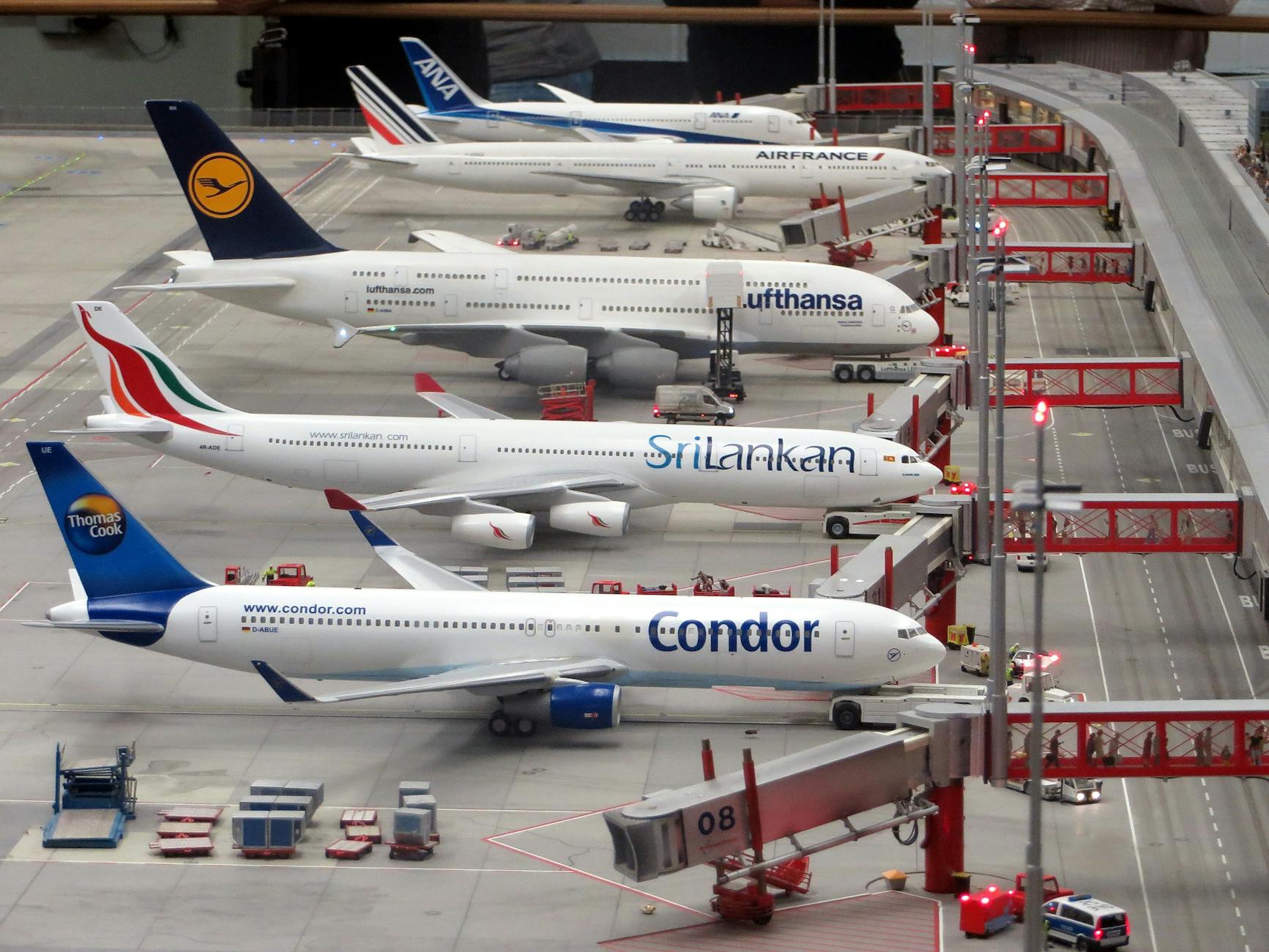April 2025 Vol 006 Issue 02 |
|
|
|
|---|
|
Lote Notes Fire, Risk and Security in Practice CEO’s Message – Lote Notes – April 2025 Edition As Lote moves forward, our growth continues to be fuelled by the invaluable experiences of our dedicated team, the clients we serve, and the impactful outcomes we achieve. Human connections and interactions remain at the heart of everything we do, a fundamental truth worth revisiting, especially as Generative AI and Agentic AI increasingly shape and transform our workplace and industry. This past quarter marked a significant milestone in our journey as we proudly achieved ISO 27001 certification. Alongside our successful ISO 9001 re-certification, this accomplishment underscores Lote’s unwavering commitment to quality, client satisfaction, and a disciplined, standards-driven approach to information security and management. Importantly, these certifications are not endpoints, but rather symbols of our ongoing dedication to accountability and continuous improvement in delivering exceptional fire safety, security, and risk management solutions. Our team has remained industrious over the past months, actively engaged in delivering critical projects while simultaneously staying abreast of key industry advancements. Highlights from this quarter include participation in prominent industry events such as the 2025 National HR Summit, which emphasised the importance of proactive and adaptable HR practices, focusing heavily on employee wellbeing, compliance navigation, and leveraging innovative strategies to recruit, retain, and nurture talent essential for future organisational success. Additionally, attendance at the Protective Security Summit NSW 2025 provided us with profound insights into emerging security threats and reinforced the necessity for innovative protective strategies and cross-sector collaboration to strengthen resilience across New South Wales. We also participated in specialised fire safety events, including ‘Bushfire Sprinklers: the future’, where discussions highlighted advancements in bushfire mitigation technologies, and ‘Fire Bolts and Fire Door Attachments: The Issues and Challenges’, which provided critical insights into the complexities and ongoing challenges related to fire door safety and installation standards. As we continue our journey, we remain focused, agile, and committed to enhancing safety, security, and resilience, driven by our people and the relationships we nurture every day. Warm regards,
Dr Maher Magrabi
CEO - Lote Consulting
Fire | Risk | Security | Cyber
Making the world safe and secure
|
Lote Notes Reading Guide This April, we have a dynamic array of articles from Fire Safety and Security, with a focus on QRA (Quantitative Risk Analysis), Quantitative Methods (QM), CFD Smoke Modelling and Fire Testing. These methods elaborate how it can improve fire safety solutions. This issue also provides insights from security, and the urgency to continue developing ways to strengthen public safety through HVM, (Hostile Vehicle Mitigation). In the article, ‘The Science of Fire Safety,’ this delves into the way quantitative evidence methods, such as QRA can be applied, and how it holds more advantages than traditional prescriptive codes such as building codes like the NCC. QRA involves new technologies and design approaches, and the crucial shift towards data-driven fire engineering. How can Computational Fluid Dynamics give us insight into how air, heat and gas move? Fires behave like fluids, hot gases rise, cool air moves in to replace them, and smoke travels through the paths of least resistance. CFD is a way of stimulating fluid movement using the laws of physics. In this article, ‘Beyond The Flames,’ How CFD modelling predicts Fire Behaviour.' This breaks down how CFD works, and the importance of using it in performance-based fire engineering design. Building into quantitative based methods, the article, 'Risk in Numbers: The Power of Quantitative Fire Risk Analysis,’ provides a detailed analysis on how QRA assists in identifying risk, assessing its likelihood and consequences. To understand what QRA is, it can be helpful to compare it to forecasting extreme weather events such as floods. Similarly, Fire Engineers use QRA to identify and manage risks using a structured methodology to provide clear and actionable insights into Risk Management. It’s likely that you heard about the tragic event at Grenfell Tower in London, which took place on June 14, 2017. However, what could have prevented this is proper materials fire testing, which involves evaluating the properties and performance of materials under stimulated conditions. The article, ‘Materials Matter: How Testing Fire Behaviour Saves Lives,’ elaborates on the flaws of Grenfell Tower, and the role it played in exacerbating the fire, as it used combustible cladding that failed to meet fire safety standards. Shifting into security, the article ‘More than just bollards: The future of Pedestrian safety,’ details the urgent priority for pedestrian safety in urban design due to increasing incidents involving pedestrians and vehicles. Some of the key points covered include the challenges posed by larger vehicles such as SUVs and UTES, as they are perceived as safer for drivers. However, this poses an increased risk due to its size. Strategies to combat this include physical barriers and separation, visibility and sight-lines and smart lines. In a two-part series, 'Designing Safer Cities: Balancing Accessibility and Security,' highlights the importance of implementing extensive measures to mitigate vehicle attacks, risks including barricades and bollards. However, can there be such a thing as being too secure? Read on to see how accessibility fits with aesthetics, blending into architectural spaces in the first part of this article. In the second part of this article, ‘Painting Bollards across Melbourne: Exploring the intersection between Art, Resilience and Security,’ explores the way security measures, and design can still be used in harmony. This is detailed in the aftermath of an attack in Melbourne, where several bollards were placed around the city and residents took their own initiative to paint and colour them. 'When Tragedy Strikes: How Vehicle Attacks Are Changing Security Thinking,’ raises the critical questions that are put forth after the recent rise in vehicle attacks, such as the failures in security implementation and HVM measures. While we can’t eliminate all threats, strategic urban design and layered counterterrorism measures can significantly reduce risk and enhance public safety. |
|
|---|
| | |
Lote Notes Podcast: April 2025 vol 006 Issue 2 | | |
|
|
|
|---|
|
Have a listen to our Lote Notes Podcast, via YouTube for a deep dive into our articles this edition! Click on the video or link below: | | |
| | |
|
|
|---|
|
 | | |
| The Science of Fire Safety | | |
| By Joyce Van Quantitative assessment in fire engineering Performance Solutions offers several advantages over traditional prescriptive codes (such as the NCC) and its qualitative methods. Some of the reasons why performance-based design is being increasingly adopted are tailored building design solutions, risk mitigation, and cost-effectiveness. | | |
|
|
|
|---|
|
| | | |  | | |
| ‘Beyond The Flames,’ CFD Modelling Predicts Fire Behaviour | | |
| By Dr Mohammed Ghaffari "Fires behave like fluids. Hot gases rise, cool air moves in to replace them, and smoke travels through the paths of least resistance." CFD is a way of simulating that fluid movement using the laws of Physics. The tool we use most often is the Fire Dynamics Simulator (FDS). Developed by NIST, FDS is built specifically for fire applications. It calculates quantities like temperature, air velocity, smoke density, and gas concentrations at thousands of points in a digital model of a building or tunnel. The basic idea behind CFD is to numerically solve the equations that govern fluid motion—known as the Navier-Stokes equations. These equations describe how air, smoke, and heat move due to forces like pressure, buoyancy, and turbulence. | | |
| | | | | | | | | Risk in Numbers: The Power of Quantitative Fire Risk Analysis. | | |
| By Jack Tetley The power of QRA lies in its ability to not only predict risks but also offer proactive solutions. Case studies illustrate its effectiveness in various settings. One case study in a waste management facility, QRA identified spontaneous combustion as a significant hazard. Based on the findings, measures such as regular monitoring, better ventilation, and improved material handling were implemented to reduce fire risks. Quantitative Risk Analysis turns fire risk assessments into a data-driven, systematic process that aligns safety measures with real-world performance. By providing a clear understanding of risks and their potential impacts, QRA empowers decision-makers to prioritise safety investments effectively. Whether it’s protecting a residential building, an industrial facility, or a waste management site, QRA ensures that fire safety measures are tailored to the unique challenges of each environment. Through collaboration, structured methodologies, and actionable insights, QRA helps create safer spaces for everyone. | | |
| | |
|
|
|---|
| | |
Materials Matter: How Testing Fire Behaviour Saves Lives | | |
| By Samir Hussen Fire testing can be further categorised into large-scale and small-scale testing. Small-scale fire testing involves assessing material properties and performance under controlled laboratory conditions using smaller samples, such as evaluating ignition points, flame spread, and heat release rates. This cost-effective method is suitable for preliminary evaluations and provides valuable data on material behaviour. An example of a small-scale test for cladding is AS 1530.1. | | |
| | |
|
|
|---|
|
 | Designing Safer Cities: Balancing Accessibility and Security By Jed Hugill In recent years, the rise in vehicle-related incidents in urban areas has heightened concerns about public safety. The requirement for pedestrian-friendly security measures has become increasingly evident due to both malicious actors and accidental crashes. This issue has been brought to the forefront by notable incidents in New Orleans, Australia, Europe and North America. Implementing inclusive city design is a potential approach to creating an accessible and safe environment for all residents regardless of age, ability or socioeconomic status. However, this raises a critical question: How can cities implement Hostile Vehicle Mitigation (HVM) measures without compromising the accessibility and openness that make urban spaces vibrant and welcoming? |
|
|
|---|
|
| | More than just Bollards: The future of Pedestrian Safety | | |
| By Ameeraa Hussain 'Stop. Look. Listen. Think.' This is what children are taught when learning about road safety. However, with the rise of electric vehicles, this phrase may need updating. Electric vehicles are significantly quieter than their gasoline counterparts, meaning pedestrians can no longer rely solely on their sense of hearing to detect oncoming traffic. This shift necessitates increased vigilance and adaptation to new forms of safety awareness. To address this, urban planners and safety advocates must consider additional measures to enhance pedestrian safety. For example, implementing more visible and audible signals at crossings, educating the public about the silent nature of electric vehicles, and encouraging designers to incorporate more intuitive safety features into both vehicles and infrastructure. These steps can help ensure that pedestrians remain safe in an evolving transportation landscape. | | |
| | |
|
|
|---|
|
Painting Bollards across Melbourne: Exploring the intersection between Art, Resilience and Security | | |
|
|
|
|---|
|
By Hashim Nahya Melbourne residents received the implantation of bollards well during the aftermath of many tragic vehicle attacks, one of which took place on January 2017. This attack had shocked the community as a driver deliberately drove into pedestrians in the busy heart of the city, killing six people. In response, authorities installed concrete bollards across the city with over 200 being placed in several suburbs. Premier, Daniel Andrews stated there was, ‘no time to be wasted,’ leaving out the design aspects and how it may look against the backdrop of city landscapes. While efficient responses are undoubtedly required, many residents complained about the grey, and concrete appearance of the bollards and took their own initiative to paint, colour and design them. A few have been splayed with bright fonts of graffiti, some covered in crochets, stickers, and patchwork fabrics. | | |
| | |
|
|
|---|
|
When Tragedy Strikes: How Vehicles Attacks are Changing Security Thinking | | |
| By Ryan Parkyns Australian urban planners and security professionals must continuously refine strategies to counter vehicle threats. Following the Bourke Street attack, Melbourne initially installed temporary barriers before transitioning to permanent infrastructure. However, risks persist, particularly in high-foot-traffic zones such as Sydney’s George Street and Brisbane’s Queen Street Mall, where controlled vehicle access remains. There is a critical need for robust security frameworks that integrate HVM solutions with real-time surveillance and rapid-response capabilities. While we can’t eliminate all threats, strategic urban design and layered counterterrorism measures can significantly reduce risk and enhance public safety. |
| | |
|
|
|---|
| | |
 | | | 26 Million Devices Hit By Info-Stealers - Bank Cards Leaked to Dark Web | | |
| A significant cybersecurity incident where nearly 26 million devices were compromised by infostealer malware between 2023 and 2024. This breach led to the leak of over 2 million unique bank card details on the dark web. The malware not only targeted bank card data but also passwords, second-factor authentication cookies, and other sensitive information. Kaspersky's report highlighted that one in every 14 infections resulted in stolen bank card data | | |
| | |
|
|
|---|
|
Carrier Truck Fire Destroys Five Cars - FRNSW |
|
|
|---|
|
| | A fire involving a car carrier on the Hume Highway at Denham Court, Sydney, destroyed five hybrid vehicles. The fire likely caused by a mechanical fault in the trailer's wheel. | | |
| | |
|
|
|---|
|
 | | | Security at regional airports under microscope after Avalon incident | | |
| A 17-year-old boy breached security at Avalon Airport, boarding a Jetstar flight to Sydney with a loaded shotgun. This incident has raised concerns about regional airport security. | | |
|
|  | | | Workers injured in expanding foam fires - NSW Govt | | |
| On March 12, 2025, plumbing workers applying expanding foam under baths were injured when an ignition source ignited the foam. leading to explosions and fires. Workers sustained serious burns and required medical treatment and hospitalisation. | | |
| | |
|
|
|---|
|
To access previous articles please visit our website. |
|
|---|
|
Lote Consulting
www.loteconsulting.com
+61 1300 761 744 |
|
|  | |
| |
|---|
|
|
|
|
|
|
|---|
|
Making the world safe and secure |
|
|---|
|
Sydney I Canberra I Newcastle I Kuala Lumpur I Dubai I Toronto |
|
|---|
|
© 2025 Lote Consulting Pty Ltd |
|
|---|
|
|
|